#Date Palm
Explore tagged Tumblr posts
Text
Canary Island Date Palm 🍍🌴

#Canary Island Date Palm#Pineapple Palm#Date Palm#Phoenix Canariensis#Palm Trees#Pearl Island#City Lights#Pearl Qatar#Marina Bay#Boat Ramp#Night Lights#Arabian Nights#Flybridge#Boat#Yacht#Island#Tree#Nightlife#Doha#Qatar
110 notes
·
View notes
Text

عَنِ ابْنِ عُمَرَ، قَالَ قَالَ رَسُولُ اللَّهِ صلى الله عليه وسلم " إِنَّ مِنَ الشَّجَرِ شَجَرَةً لاَ يَسْقُطُ وَرَقُهَا، وَإِنَّهَا مَثَلُ الْمُسْلِمِ، فَحَدِّثُونِي مَا هِيَ ". فَوَقَعَ النَّاسُ فِي شَجَرِ الْبَوَادِي. قَالَ عَبْدُ اللَّهِ وَوَقَعَ فِي نَفْسِي أَنَّهَا النَّخْلَةُ، فَاسْتَحْيَيْتُ ثُمَّ قَالُوا حَدِّثْنَا مَا هِيَ يَا رَسُولَ اللَّهِ قَالَ " هِيَ النَّخْلَةُ ". صحيح البخاري ومسلم حديث ٦١ - ٢٨١١
Narrated Ibn `Umar: Allah's Messenger (peace be upon him) said, "Amongst the trees, there is a tree, the leaves of which do not fall and is like a Muslim. Tell me the name of that tree." Everybody started thinking about the trees of the desert areas. And I thought of the date-palm tree but felt shy to answer the others then asked, "What is that tree, O Allah's Messenger (peace be upon him) ?" He replied, "It is the date-palm tree." Sahih al-Bukhari 61 In-book reference : Book 3, Hadith 3 // Sahih Muslim 2811 a In-book reference : Book 52, Hadith 52
قال المهلب: معنى طرح المسائل على التلاميذ لترسخ فى القلو�� وتثبت، لأن ما جرى منه فى المذاكرة لا يكاد ين��ى. وفيه: ضرب الأمثال بالشجر وغيرها، وشبه (صلى الله عليه وسلم) النخلة بالمسلم، كما شبهها الله فى كتابه، وضرب بها المثل للناس، فقال: (أَلَمْ تَرَ كَيْفَ ضَرَبَ اللهُ مَثَلاً كَلِمَةً طَيِّبَةً كَشَجَرةٍ طَيِّبَةٍ أَصْلُهَا ثَابِتٌ وَفَرْعُهَا فِى السَّمَاء (يعني النخلة التى) تُؤْتِى أُكُلَهَا كُلَّ حِينٍ) [إبراهيم: ٢٦] ، وكذلك المسلم يأتى الخير كل حين من الصلاة، والصوم، وذكر الله تعالى، فكأن الخير لا ينقطع منه، فهو دائم كما تدوم أوراق النخلة فيها، ثم الثمر الكائن منها في أوقاته. شرح صحيح البخاري لابن بطال
قال الربيع بن أنس : " كل حين " : أي : كل غدوة وعشية ، لأن ثمر النخل يؤكل أبدا ليلا ونهارا ، صيفا وشتاء ، إما تمرا أو رطبا أو بسرا ، كذلك عمل المؤمن يصعد أول النهار وآخره وبركة إيمانه لا تنقطع أبدا ، بل تصل إليه في كل وقت . والحكمة في تمثيل الإيمان بالشجرة : هي أن الشجرة لا تكون شجرة إلا بثلاثة أشياء : عرق راسخ ، وأصل قائم ، وفرع عال ، كذلك الإيمان لا يتم إلا بثلاثة أشياء : تصديق بالقلب ، وقول باللسان ، وعمل بالأبدان . تفسير البغوي
وَفِي هَذَا الْحَدِيثِ فَوَائِدُ - مِنْهَا اسْتِحْبَابُ إِلْقَاءِ الْعَالِمِ الْمَسْأَلَةَ عَلَى أَصْحَابِهِ لِيَخْتَبِرَ أَفْهَامَهُمْ وَيُرَغِّبَهُمْ فِي الْفِكْرِ وَالِاعْتِنَاءِ - وَفِيهِ ضَرْبُ الْأَمْثَالِ وَالْأَشْبَاهِ وَفِيهِ تَوْقِيرُ الْكِبَارِ كَمَا فَعَلَ بن عُمَرَ لَكِنْ إِذَا لَمْ يَعْرِفِ الْكِبَارُ الْمَسْأَلَةَ فَيَنْبَغِي لِلصَّغِيرِ الَّذِي يَعْرِفُهَا أَنْ يَقُولَهَا - وَفِيهِ سُرُورُ الْإِنْسَانِ بِنَجَابَةِ وَلَدِهِ وَحُسْنِ فَهْمِهِ وَقَوْلُ عُمَرَ رَضِيَ اللَّهُ عَن��هُ لَأَنْ تَكُونَ قُلْتَ هِيَ النَّخْلَةُ أَحَبُّ إِلَيَّ أَرَادَ بِذَلِكَ أَنَّ النَّبِيَّ صَلَّى اللَّهُ عَلَيْهِ وَسَلَّمَ كَانَ يَدْعُو لِابْنِهِ وَيَعْلَمُ حُسْنَ فَهْمِهِ وَنَجَابَ��ِهِ - وَفِيهِ فَضْلُ النَّخْلِ قَالَ الْعُلَمَاءُ وَشَبَّهَ النَّخْلَةَ بِالْمُسْلِمِ فِي كَثْرَةِ خَيْرِهَا وَدَوَامِ ظِلِّهَا وَطِيبِ ثَمَرِهَا وَوُجُودِهِ عَلَى الدَّوَامِ فَإِنَّهُ مِنْ حِينِ يَطْلُعُ ثَمَرُهَا لايزال يُؤْكَلُ مِنْهُ حَتَّى يَيْبَسَ وَبَعْدَ أَنْ يَيْبَسَ يُتَّخَذُ مِنْهُ مَنَافِعُ كَثِيرَةٌ وَمِنْ خَشَبِهَا وَوَرَقِهَا وَأَغْصَانِهَا فَيُسْتَعْمَلُ جُذُوعًا وَحَطَبًا وَعِصِيًّا وَمَخَاصِرَ وَحُصْرًا وَحِبَالًا وَأَوَانِيَ وَغَيْرَ ذَلِكَ ثُمَّ آخِرُ شَيْءٍ مِنْهَا نَوَاهَا وَيُنْتَفَعُ بِهِ عَلَفًا لِلْإِبِلِ ثُمَّ جَمَالُ نَبَاتِهَا وَحُسْنُ هَيْئَةِ ثَمَرِهَا فَهِي مَنَافِعُ كُلُّهَا وَخَيْرٌ وَجَمَالٌ كَمَا أَنَّ الْمُؤْمِنَ خَيْرٌ كُلُّهُ مِنْ كَثْرَةِ طَاعَاتِهِ وَمَكَارِمِ أَخْلَاقِهِ وَيُوَاظِبُ عَلَى صَلَاتِهِ وَصِيَامِهِ وَقِرَاءَتِهِ وَذِكْرِهِ وَالصَّدَقَةِ وَالصِّلَةِ وَسَائِرِ الطَّاعَاتِ وَغَيْرِ ذَلِكَ فَهَذَا هُوَ الصَّحِيحُ فِي وَجْهِ التَّشْبِيهِ قِيلَ وَجْهُ الشَّبَهِ أَنَّهُ إِذَا قَطَعَ رَأْسَهَا مَاتَتْ بِخِلَافِ بَاقِي الشَّجَرِ وقيل لأنها لاتحمل حَتَّى تُلَقَّحَ وَاَللَّهُ أَعْلَمُ قَوْلُهُ (فَوَقَعَ النَّاسُ فِي شَجَرِ الْبَوَادِي) أَيْ ذَهَبَتْ أَفْكَارُهُمْ إِلَى أَشْجَارِ الْبَوَادِي وَكَانَ كُلُّ إِنْسَانٍ يُفَسِّرُهَا بِنَوْعٍ مِنْ أَنْوَاعِ شَجَرِ الْبَوَادِي وَذَهِلُوا عَنِ النَّخْلَةِ قوله (قال بن عُمَرَ وَأُلْقِي فِي نَفْسِي أَوْ رُوعِي أَنَّهَا النَّخْلَةُ فَجَعَلْتُ أُرِيدُ أَنْ أَقُولَهَا فَإِذَا أَسْنَانُ الْقَوْمِ فَأَهَابُ أَنْ أَتَكَلَّمَ) الرُّوعُ هُنَا بِضَمِّ الرَّاءِ وَهُوَ النَّفْسُ وَالْقَلْبُ وَالْخَلَدُ وَأَسْنَانُ الْقَوْمِ يَعْنِي كِبَارُهُمْ وَشُيُوخُهُمْ .. شرح النووي على صحيح مسلم
Al-Mahlab said: The meaning of asking questions to the students so that they may be fixed in their hearts, because what is learned in study is hardly ever forgotten. And in it: He (peace be upon him) likened the palm tree to the Muslim, as Allah has likened it in His Book, and set an example for people, saying: "See you not how Allah sets forth a parable? - A goodly word as a goodly tree, whose root is firmly fixed, and its branches (reach) to the sky (i.e. very high). * Giving its fruit at all times, " [Ibrahim:٢٤ - ٢٥] Similarly, a Muslim does good all the time, from prayer, fasting, and remembrance of Allah Almighty. translated from Commentary on Sahih al-Bukhari by Ibn Battal
The believer is just like the beneficial date tree, always having good actions ascending at all times, by day and by night. ... Allah said next, تُؤْتِى أُكُلَهَا كُلَّ حِينٍ ( Giving its fruit at all times, ) It is said that it means by day and by night. And they say that describes the believer as a tree that always has fruits during summer and winter, by night and by day. This is the parable of the believer whose good works ascend to heaven by day and by night and at all times,... Quran 14:25 Tafsir Ibn Kathir
#حديث#أحاديث نبوية#اللهم صل وسلم على نبينا محمد#الرسول صلى الله عليه وسلم#النبي محمد صلى الله عليه و آله وسلم#صلى الله عليه وسلم#حديث صحيح#hadith sahih#muslim#hadeth#ahadeth#islam#sunnah#hadith#النخلة#نخلة#مسلم#المسلم#عمل صالح#تش��ه#muslims#date palm#palm trees#believer#prophet muhammad#prophet muhammed pbuh#prophet mohammed
29 notes
·
View notes
Text
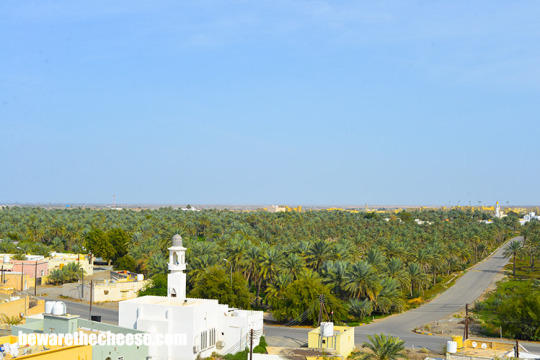
The view from a #fort just outside of #Muscat, #Oman. A daily photo from my archives. bewarethecheese.com #photography #travel #asia #middleeast
#art#photography#bewarethecheese.com#travel#middleeast#asia#oman#muscat#fort#mosque#war#battle#view#date palm#garden
9 notes
·
View notes
Text



minaret, steeple and date-palms (2023)
Casablanca Cathedral of the Sacred Heart (1930-1956)
© optikestrav
3 notes
·
View notes
Text

objectober 2: picnic
photosynthesis is like basically eating and theyre in an outdoor place so I think that fits the definition good enough
#object ocs#osc#objectober#banana palm#date palm#blue bismarck palm#sabal palm#don’t worry about the tears on banana! they just like roughhousing lol#art
15 notes
·
View notes
Text
African Sunrise
Gertrude May Lutz
Sky
Over the last star;
The parrot-winds
Sharp-beaked with yellow
Nipping the bunched date palms . . .
Now the camels
Open their beeswax eyes
And raise long necks,
Rutted sound in their throats –
Camels, pock-marking the sand with spread knees,
Lifting the odor of under-body with them.
Sun –
The burn of it
Hot-coined to each eyelid,
And desert-stretched,
the caravan of hours
not yet begun.
"Reflections on a Gift of Watermelon Pickle... And Other Modern Verse" - compiled by Stephen Dunning, Edward Lueders, and Hugh Smith
#book quotes#poetry#reflections on a gift of watermelon pickle#stephen dunning#edward lueders#hugh smith#african sunrise#gertrude may lutz#sky#sunrise#parrots#yellow#date palm#camels#beeswax#rutted#pock marked#sand#odor#sun#burning sun#desert#caravan
2 notes
·
View notes
Text

#photographers of tumblr#photographers on tumblr#lensblr#photography#original photographers#bay area#norcal#california#fall#autumn#date palm#fruit tree#garden#aesthetic
3 notes
·
View notes
Text

Date palms
9 notes
·
View notes
Text

Eine Tasse Dattelnpalme bitte.
0 notes
Text

hybrid date palm competing with its natural cousin
It seems my eyes have traced it thrice by now. Keeping a count is a bit tricky, but I exercise it often in a new place or city. Helps draw a landmark to remember a place, a corner in cities that look similar, mostly paved with grid-like layouts. It might cease to be called a landmark unless it were a building or a monument, in which case one could argue otherwise. Every day on the bus to the studio, I confront this tall telecommunication tower - eerie, clad in timeless date palm. One has to look up to see it; it is symbolic. A gesture, in an attire that is connecting, navigational and decorative, cultural connotations and biome tensions. It wears a distinct aesthetics of this place enhancing the landscaping; in its subtly artificial appearance.
After many rounds around this city, it is clear how difficult it can be to eventually spot it. Apparently taller than its natural-cousin which has greyish-white, greenish blue leaves this stands out greener with prominent mobile service provider’s logo displayed at its feet. In the urban landscape, top-view architecture emphasises its road pushing through space and land made to mimic its capitalist ideals. It’s upscale appearance envince its antenna reaching up into the blue sky.
Whether a natural date palm radiates any sense of freshness or the idea of growth seems at odds with how green it appears. The notion of green is tied to growth (inject at least in my mind), isn't it? It's about how lush and varied a tree's features are through changing seasons. Yet, simply being green does not really imbue it with vitality in its presence.
Isn’t the date fruit somewhere between sweet and bitter when freshly plucked? transforming into sweet as it dries. Harvested dates, in their fresh state, are a bit bitter, they say. I recently read an article on food history and culture, exploring how delicious delicacies, like ma'amoul, offer a reward of sweetness. Ma'amoul is known by various names across the Middle East. Traditionally understood as a means of transforming ideas of home, family and gathering, cut to this giant figure mirrors a growing city and embodies a larger, interconnected network with urbanism’s infrastructural vision.
I am reminded of Walter Benjamin's, “The power of country road when one is walking along it is different from the power it has when one is flying over it by aeroplane.” On the other hand, an image comes to mind. 'My Plant Immigrants'—the suspended Mejdoul date palm, chained by its neck, imagine an upside-down chandelier forced into a massive concrete crate—within a polished, defining room, embodies Christopher Joshua Benton's uprooted imagery, questioning migration, labour economies, and identity politics—tough terms to reconcile. How are we informed of palms in our everyday life? Apart from the supermarket shelf or its listed health benefits. Not only raises a jibe about the history of palms: the farmers who harvest and water these trees, where they come from, and how this fruit reaches millions around the world, proposes artist. Through art, certain invisible, uncertain, and disappearing facts can open up new possibilities.
The connection between people remains a theme in the story of palms—whether in the form of a grand hybrid version of interconnectedness or mouth-watering cookies, ma’amoul (those filled with date paste I recently tasted). What it also does is transpire between spectacle and image of welcome in ghosted histories of where it belongs.
References
Doherty, Gareth. (2017) Paradoxes of Green: Landscapes of a City-State: Green Scenery the vertical and the horizontal. 1st ed. University of California Press.
"Maamoul: An Ancient Cookie That Ushers In Easter And Eid In The Middle East", The Salt by Emy E. Robertson, NPR.org, April 2017
"The World was my Garden" Christopher Joshua Benton, https://www.christopherbenton.com/
0 notes
Text
palm plants
The Art and Science of Landscaping: A Comprehensive Guide Introduction
Landscaping is more than just arranging plants and materials around a home or garden; it's an art form and a science that blends aesthetic beauty with practical functionality. Whether you’re a homeowner looking to enhance your garden or a professional landscaper aiming to create stunning outdoor spaces, understanding the fundamentals of landscaping, including the selection of plants, materials, and design principles, is essential. In this article, we will explore various aspects of landscaping, focusing on the role of palm plants, timber plants, fragrance plants, and grass, and how these elements can transform your outdoor environment. For more information and resources, visit CP Nursery.
Understanding Landscaping
Landscaping involves the design, installation, and maintenance of outdoor spaces to create aesthetically pleasing and functional environments. It encompasses various elements such as plant selection, hardscaping (e.g., paths, walls, and patios), and overall layout. A well-designed landscape can enhance property value, provide recreational areas, and create a harmonious relationship between the built environment and nature.
The Role of Plants in Landscaping
Plants are the cornerstone of landscaping. They add color, texture, and life to outdoor spaces while also providing ecological benefits such as improving air quality and supporting local wildlife. When selecting plants for a landscape, consider factors such as climate, soil type, and maintenance requirements.
Palm Plants: A Tropical Touch
Palm plants are renowned for their exotic appeal and are a popular choice in landscaping for creating tropical or subtropical themes. They come in various species, each with unique characteristics. For example:
Areca Palm (Dypsis lutescens): Known for its feathery, arching leaves and slender trunk, the Areca Palm adds a graceful touch to gardens and indoor spaces alike. Royal Palm (Roystonea regia): With its tall, straight trunk and expansive canopy, the Royal Palm makes a striking focal point in large landscapes. Sago Palm (Cycas revoluta): Although not a true palm, the Sago Palm offers a similar aesthetic with its bold, leathery fronds and compact size. Palm plants are generally low-maintenance and thrive in well-drained soil with plenty of sunlight. They are ideal for creating a tropical atmosphere in gardens, resorts, and urban landscapes.
Timber Plants: Strength and Beauty
Timber plants are valued for their durable wood and often play a significant role in both landscaping and functional design. They are used for various purposes, from creating sturdy structures to adding vertical interest. Some popular timber plants include:
Teak (Tectona grandis): Known for its high-quality wood, Teak is used in constructing furniture and outdoor structures. It also provides shade and a rustic charm to landscapes. Mahogany (Swietenia macrophylla): Mahogany trees offer beautiful, rich-colored wood and can serve as a majestic backdrop in larger gardens. Cedar (Cedrus spp.): Cedar trees are prized for their aromatic wood and resilience to pests, making them ideal for fences, decks, and garden features. In landscaping, timber plants not only provide structural elements but also enhance the visual appeal of outdoor spaces through their textures and colors.
Fragrance Plants: Scent and Sensibility
Fragrance plants add a sensory dimension to landscaping. Their pleasant scents can transform a garden into a haven of relaxation and enjoyment. Some popular fragrance plants include:
Lavender (Lavandula spp.): Known for its soothing aroma and beautiful purple flowers, Lavender is a favorite for both garden beds and containers. Jasmine (Jasminum spp.): Jasmine vines or shrubs produce intensely fragrant flowers that are perfect for trellises, arbors, or as ground cover. Rose (Rosa spp.): Roses are classic garden plants with a range of fragrances, from light and sweet to rich and spicy. They can be used in formal gardens or casual beds. Incorporating fragrance plants into your landscape design can create inviting spaces that engage the senses and enhance the overall atmosphere of your garden.
Grass: The Foundation of Landscape Design
Grass plays a crucial role in landscaping, providing a lush, green foundation that complements other elements. It offers aesthetic appeal and practical benefits, such as erosion control and cooling. Types of grass used in landscaping include:
Kentucky Bluegrass (Poa pratensis): Popular in cooler climates, Kentucky Bluegrass forms a dense, carpet-like lawn that is both visually appealing and resilient. Bermudagrass (Cynodon dactylon): Ideal for warmer regions, Bermudagrass is known for its drought tolerance and ability to withstand heavy foot traffic. Fescue (Festuca spp.): Fescue grasses are versatile and can thrive in various conditions, making them suitable for both sun and shade areas. Choosing the right type of grass depends on your climate, soil conditions, and intended use. Proper maintenance, including regular mowing, watering, and fertilizing, is essential for keeping your lawn healthy and attractive.
Integrating Hardscaping with Landscaping
Hardscaping involves the use of non-plant elements such as stone, wood, and concrete to enhance the functionality and appearance of outdoor spaces. Common hardscaping elements include:
Paths and Walkways: These guide visitors through the landscape and can be constructed from materials like flagstone, gravel, or pavers. Retaining Walls: Useful for managing slopes and creating terraces, retaining walls can be built from various materials, including timber, stone, or concrete. Patios and Decks: These provide outdoor living spaces for dining, entertaining, or relaxing and can be made from wood, composite materials, or stone. Hardscaping elements should complement the overall landscape design and work harmoniously with plants and other features.
Sustainable Landscaping Practices
Sustainable landscaping focuses on creating environmentally friendly outdoor spaces that conserve resources and support ecological health. Key practices include:
Native Plants: Using plants native to your region helps conserve water, reduce the need for fertilizers and pesticides, and support local wildlife. Water Management: Implementing techniques such as rain gardens, drip irrigation, and mulching can help manage water use and prevent runoff. Soil Health: Improving soil quality through composting and proper drainage supports healthy plant growth and reduces the need for chemical inputs. Sustainable landscaping not only benefits the environment but also creates low-maintenance, resilient outdoor spaces.
Conclusion
Landscaping is a multifaceted discipline that combines creativity with technical knowledge to create beautiful and functional outdoor spaces. By thoughtfully incorporating palm plants, timber plants, fragrance plants, and grass into your landscape design, you can enhance the visual appeal, comfort, and usability of your garden. Additionally, integrating hardscaping elements and adopting sustainable practices will ensure your landscape is both practical and environmentally responsible.
For expert advice and a wide range of plants and materials, visit CP Nursery. They offer valuable resources and guidance to help you achieve your landscaping goals and transform your outdoor spaces into stunning environments.
0 notes
Text

نزل رسولُ اللهِ صلَّى اللهُ عليه وسلَّمَ على أبي. قال فقرَّبنا إليه طعامًا ووطبةً. فأكل منها. ثم أُتِيَ بتمرٍ فكان يأكله ويُلقي النَّوى بين إصبعَيه ويجمع السبابةَ والوُسطى ( قال شعبة : هو ظني. وهو فيه ، إن شاء اللهَ ، إلقاءُ النَّوَى بين الإصبعَينِ ). ثم أُتِيَ بشرابٍ فشربه. ثم ناوله الذي عن يمينِه. قال فقال أبي ، وأخذ بلجامِ دابتِه : ادعُ اللهَ لنا. فقال “ اللهمَّ ! بارِكْ لهم في ما رزقتَهم . واغفرْ لهم وارحمْهم “ صحيح مسلم حديث ٢٠٤٢
‘Abdullah b. Busr reported: Allah’s Messenger (pbuh) came to my father and we brought to him a meal and a preparation from dates, cheese and butter. He ate out of that. He was then given dates which he ate, putting the stones between his fingers and holding his forefinger and middle finger together” - Shu'bah said: “I think we learn from this that one may hold the date stones between two fingers, In shaAllah.” Then a drink was brought for him and he drank it, and then gave it to one who was on his right side. He (the narrator) said: My father took hold of the rein of his riding animal and requested him to supplicate for us. Thereupon he said: ” O Allah. bless them in what You have provided them as a sustenance; and forgive them and have mercy upon them.” Sahih Muslim 2042 a In-book reference : Book 36, Hadith 202
باب اسْتِحْبَابِ وَضْعِ النَّوَى خَارِجَ التَّمْرِ وَاسْتِحْبَابِ دُعَاءِ الضَّيْفِ لأَهْلِ الطَّعَامِ وَطَلَبِ الدُّعَاءِ مِنَ الضَّيْفِ الصَّالِحِ وَإِجَابَتِهِ لِذَلِكَ.. مسلم ()
عَبْدُ اللَّهِ بْنُ بُسْرٍ بِضَمِّ الْبَاءِ وَيَزِيدُ بْنُ خُمَيْرٍ بِضَمِّ الْخَاءِ الْمُعْجَمَةِ وَفَتْحِ الْمِيمِ وَقَوْلُهُ وَوَطْبَةً هَكَذَا رِوَايَةُ الْأَكْثَرِينَ وَطْبَةً بِالْوَاوِ وَإِسْكَانِ الطَّاءِ وَبَعْدَهَا بَاءٌ مُوَحَّدَةٌ وَهَكَذَا رَوَاهُ النَّضْرُ بْنُ شُمَيْلٍ رَاوِي هَذَا الْحَدِيثِ عَنْ شُعْبَةَ وَالنَّضْرُ إِمَامٌ مِنْ أَئِمَّةِ اللُّغَةِ وَفَسَّرَهُ النَّضْرُ فَقَالَ الْوَطْبَةُ الْحَيْسُ يَجْمَعُ التَّمْرَ الْبَرْنِيَّ وَالْأَقِطَ الْمَدْقُوقَ وَالسَّمْنَ وَكَذَا ضَبَطَهُ أَبُو مَسْعُودٍ الدِّمَشْقِيُّ وَأَبُو بَكْرٍ الْبَرْقَانِيُّ وَآخَرُونَ وَهَكَذَا هُوَ عِنْدَنَا فِي مُعْظَمِ النُّسَخِ … وقوله ويلقى النوى بين أصبعيه أى يجعله بَيْنَهُمَا لِقِلَّتِهِ وَلَمْ يُلْقِهِ فِي إِنَاءِ التَّمْرِ لِئَلَّا يَخْتَلِطَ بِالتَّمْرِ وَقِيلَ كَانَ يَجْمَعُهُ عَلَى ظَهْرِ الْأُصْبُعَيْنِ ثُمَّ يَرْمِي بِهِ وَقَوْلُهُ قَالَ شُعْبَةُ هُوَ ظَنِّيٌّ وَهُوَ فِيهِ إِنْ شَاءَ اللَّهُ إِلْقَاءُ النَّوَى مَعْنَاهُ أَنَّ شُعْبَةَ قَالَ الَّذِي أَظُنُّهُ أَنَّ إِلْقَاءَ النَّوَى مَذْكُورٌ فِي الْحَدِيثِ فَأَشَارَ إِلَى تَرَدُّدٍ فِيهِ وَشَكٍّ وَفِي الطَّرِيقِ الثَّانِي جَزَمَ بِإِثْبَاتِهِ وَلَمْ يَشُكَّ فَهُوَ ثابت بهذه الرواية وأما رواية الشك فلاتضر سَوَاءٌ تَقَدَّمَتْ عَلَى هَذِهِ أَوْ تَأَخَّرَتْ لِأَنَّهُ تَيَقَّنَ فِي وَقْتٍ وَشَكَّ فِي وَقْتٍ فَالْيَقِينُ ثابت ولايمنعه النِّسْيَانُ فِي وَقْتٍ آخَرٍ وَقَوْلُهُ فَشَرِبَهُ ثُمَّ نَاوَلَهُ الَّذِي عَنْ يَمِينِهِ فِيهِ أَنَّ الشَّرَ��بَ ونحوه يدار على الْيَمِينِ كَمَا سَبَقَ تَقْرِيرُهُ فِي بَابِهِ قَرِيبًا وَفِيهِ اسْتِحْبَابُ طَلَبِ الدُّعَاءِ مِنَ الْفَاضِلِ وَدُعَاءِ الضَّيْفِ بِتَوْسِعَةِ الرِّزْقِ وَالْمَغْفِرَةِ وَالرَّحْمَةِ وَقَدْ جَمَعَ صَلَّى اللَّهُ عَلَيْهِ وَسَلَّمَ فِي هَذَا الدُّعَاءِ خَيْرَاتِ الدُّنْيَا وَالْآخِرَةِ وَاللَّهُ أَعْلَمُ… شرح النووي على مسلم ()
في هذا الحديثِ يَرْوي عبدُ اللهِ بنُ بُسرٍ رَضيَ اللهُ عنهما أنَّ النَّبِيَّ صلَّى اللهُ عليه وسلَّمَ نزَلَ ضَيفًا على والِده؛ فقرَّبُوا إليه، أي: وضَعُوا له طعامًا «ووَطْبَةً»، وهو طَعامٌ يُتَّخَذُ مِن التَّمرِ حيث يُخرَجُ نَواهُ ويُعجَنُ باللَّبَنِ، فَأكلَ منها النَّبِيُّ صلَّى اللهُ عليه وسلَّمَ، ثُمَّ جِيءَ له صلَّى اللهُ عليه وسلَّمَ بِتمرٍ فكان يَأكُلُه ويُلْقِي النَّوى بَيْنَ أُصبعَيْه السَّبَّابةِ والوُسْطَى، بمعنى أنَّه صلَّى اللهُ عليه وسلَّمَ لا يُلقيهِ في وِعاءِ التَّمرِ؛ لئلَّا يَختلِطَ بالتَّمرِ، ولا يَرمِيه على الأرضِ مُحافَظةً على نَظافةِ المكانِ، وفَسَّره بعضُهم بأنَّه كان يَجمَعُها بيْنَ أصابعهِ لِيَرمِيَها بعدَ ذلك في مَحلٍّ مُناسِبٍ، ثُمَّ أُتِيَ صلَّى اللهُ عليه وسلَّمَ بِشرابٍ مِن ماءٍ أو ما يقومُ مَقامَه فَشَربَه ثُمَّ أعطاه لِلَّذي عَن يَمينِه، ثُمَّ بعْدَ جَلستِه صلَّى اللهُ عليه وسلَّمَ عندَ أهلِ بَيتِ عبدِ اللهِ، قام فرَكِبَ دابَّتَه لِيَنصرِفَ، فأمسَكَ بُسرٌ والدُ عبدِ اللهِ رَضيَ اللهُ عنهما بِلِجامِ دابَّةِ النَّبِيِّ صلَّى اللهُ عليه وسلَّمَ وطلَبَ منه أنْ يَدعوَ اللهَ له ولأهْلِه، فدعا صلَّى اللهُ عليه وسلَّمَ وقال: «اللَّهمَّ بارِكْ لهم فيما رزقْتَهم»، وعلامةُ البرَكةِ القناعةُ والتَّوفِيقُ لِلطَّاعةِ، «واغْفرْ لهم» أي: ذُنوبَهم، «وارحَمْهم»: بِالتَّفضُّلِ عليهم، فجَمَع صلَّى اللهُ عليه وسلَّمَ لهم في هذا الدُّعاءِ خَيرَي الدُّنيا والآخرةِ. وفي الحديثِ: تعليمُ النَّبِيِّ صلَّى اللهُ عليه وسلَّمَ أُمَّتَه أدَبَ أكْلِ التَّمرِ. وفيه: أنَّ مِن هدْيِه صلَّى اللهُ عليه وسلَّمَ أنْ يُدارَ الشَّرابُ ونحوُه على اليمينِ. وفيه: المبادرةُ في إكرامِ الضَّيفِ، وتَقديمِ الطَّعامِ والشَّرابِ له. وفيه: طَلبُ الدُّعاءِ مِن أهلِ الفضْلِ والصَّلاحِ. وفيه: دُعاءُ الضَّيفِ لأهلِ بَيتِ الضِّيافةِ بتَوسِعةِ الرِّزقِ. الدرر السنية ()
Chapter: It is recommended to take the stones out of dates, and it is recommended for the guest to pray for the host and to ask a righteous guest to supplicate, and he should respond to that request.. Muslim ()
#حديث#أحاديث نبوية#الرسول صلى الله عليه وسلم#صلى الله عليه وسلم#النبي محمد صلى الله عليه و آله وسلم#اللهم صل وسلم على نبينا محمد#رسول الله صلى الله عليه وسلم#دعاء#ضيف#تمر#الضيف#الدعاء#سنة#الرسول#hadith#sunnah#islam#ahadeth#hadeth#muslim#hadith sahih#hadiths#prophet muhammad#prophet mohammed#prophet muhammed pbuh#date palm#dates#guest#supplements#duaa
28 notes
·
View notes
Text

The view from a #fort just outside of #Muscat, #Oman. A daily photo from my archives. bewarethecheese.com #photography #travel #asia #middleeast
#art#photography#bewarethecheese.com#travel#middleeast#asia#oman#muscat#fort#mosque#war#battle#date palm#mountains#view
2 notes
·
View notes
Text
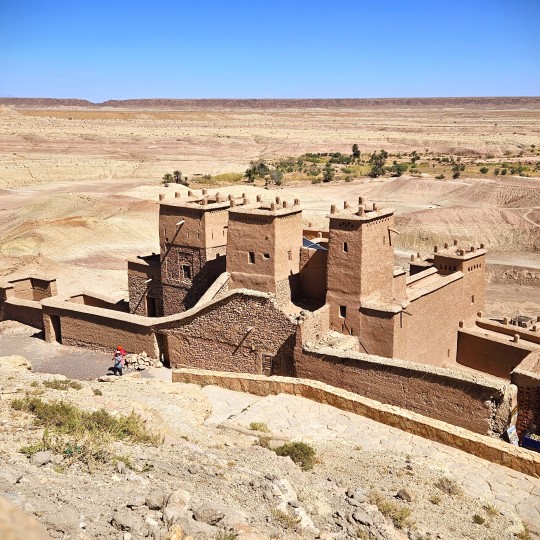
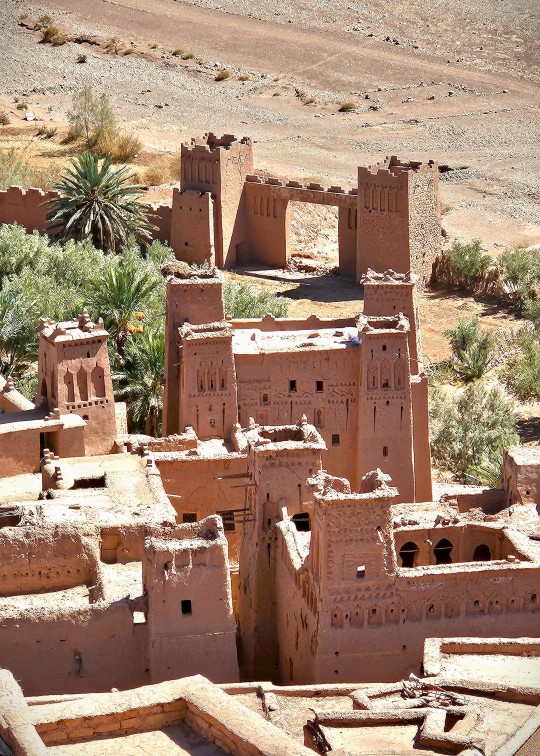
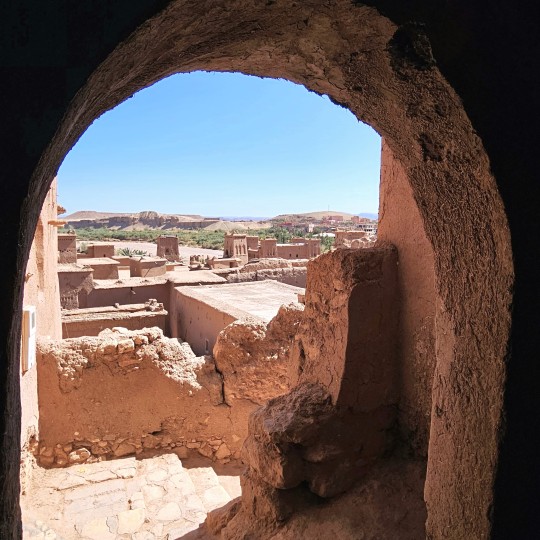
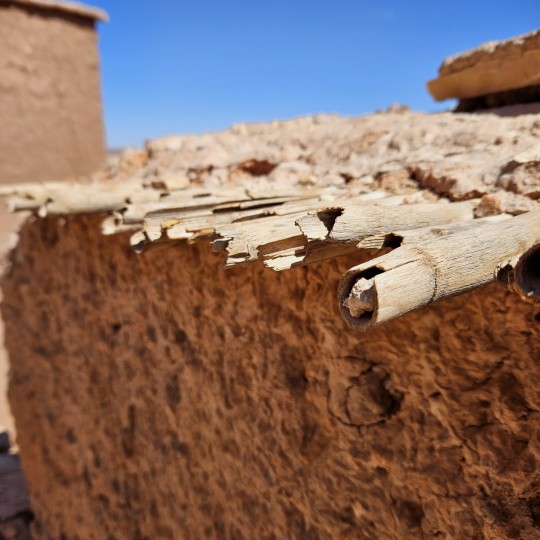
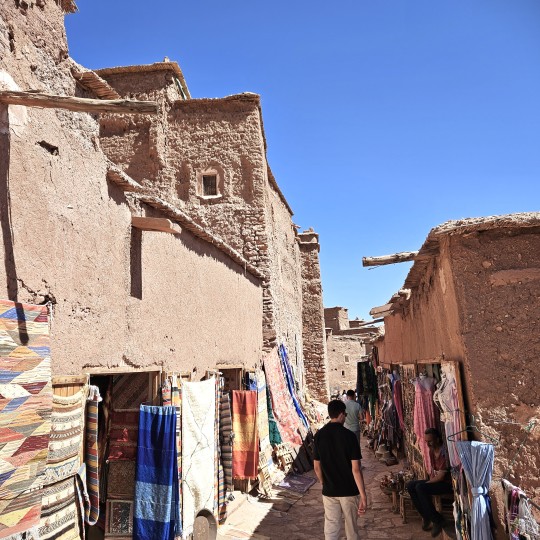

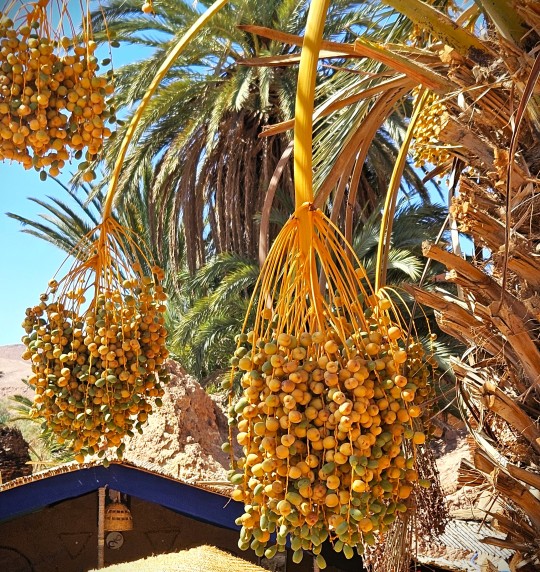
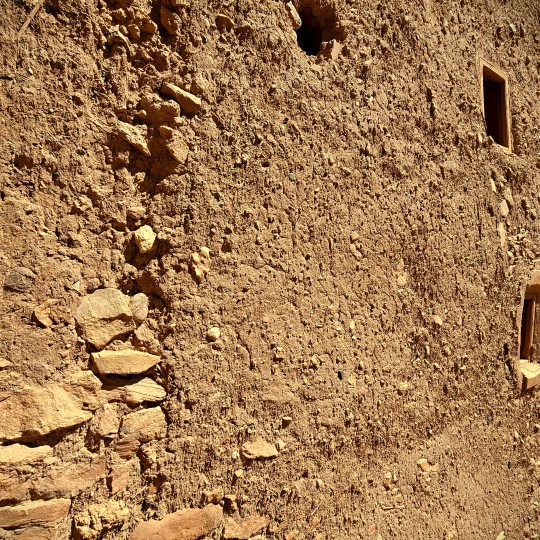
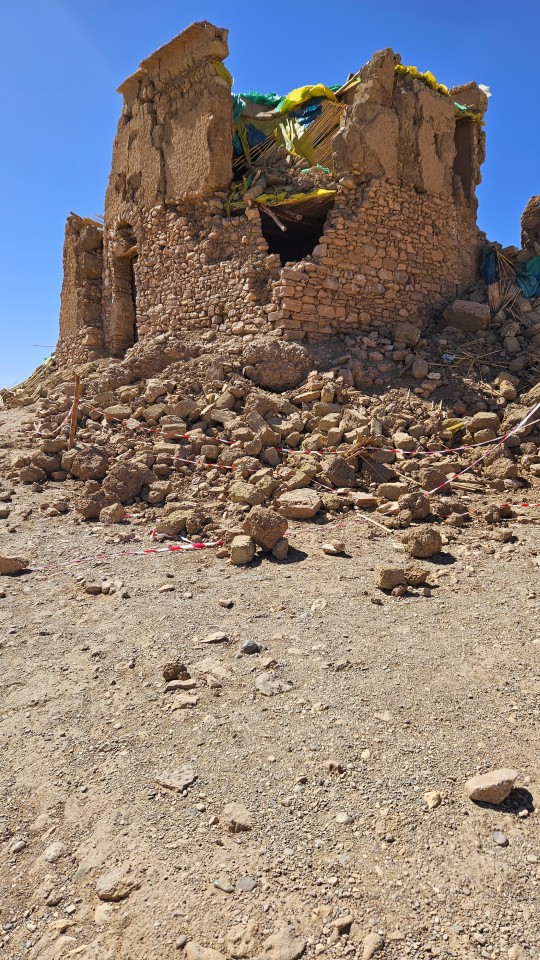
Aït Benhaddou, Morocco (September 2023)
© optikestrav
3 notes
·
View notes
Text

The last light of the Sun after a long summers day.
Taken August 9, 2024. 07:24 P.M.
- M.
#iphone camera#amatuer photography#summer#summer days#sunset#dusty trinkets#palm trees#trees#foliage#summer sunset#sunshine#banyan tree#date palm
1 note
·
View note